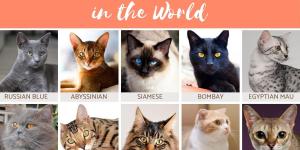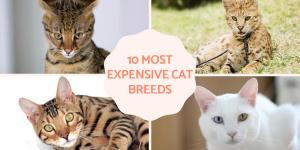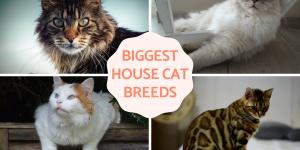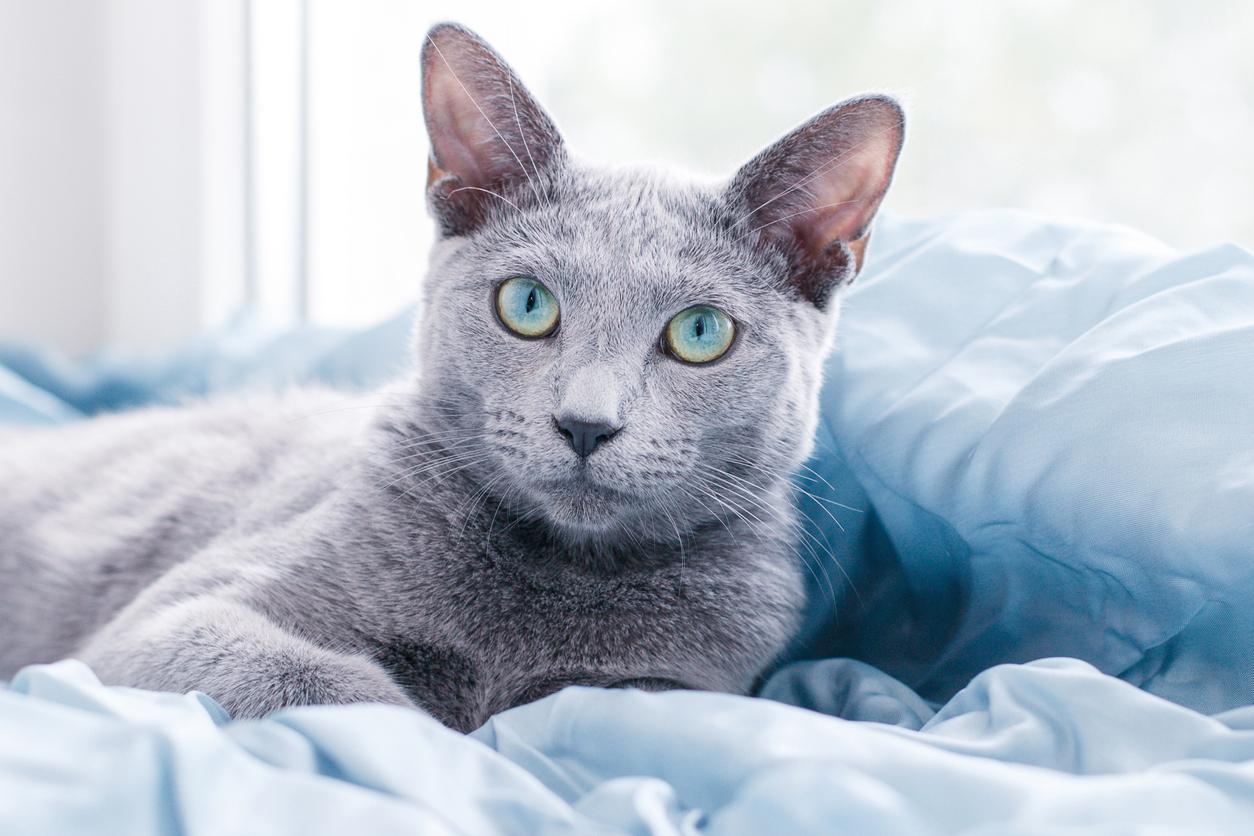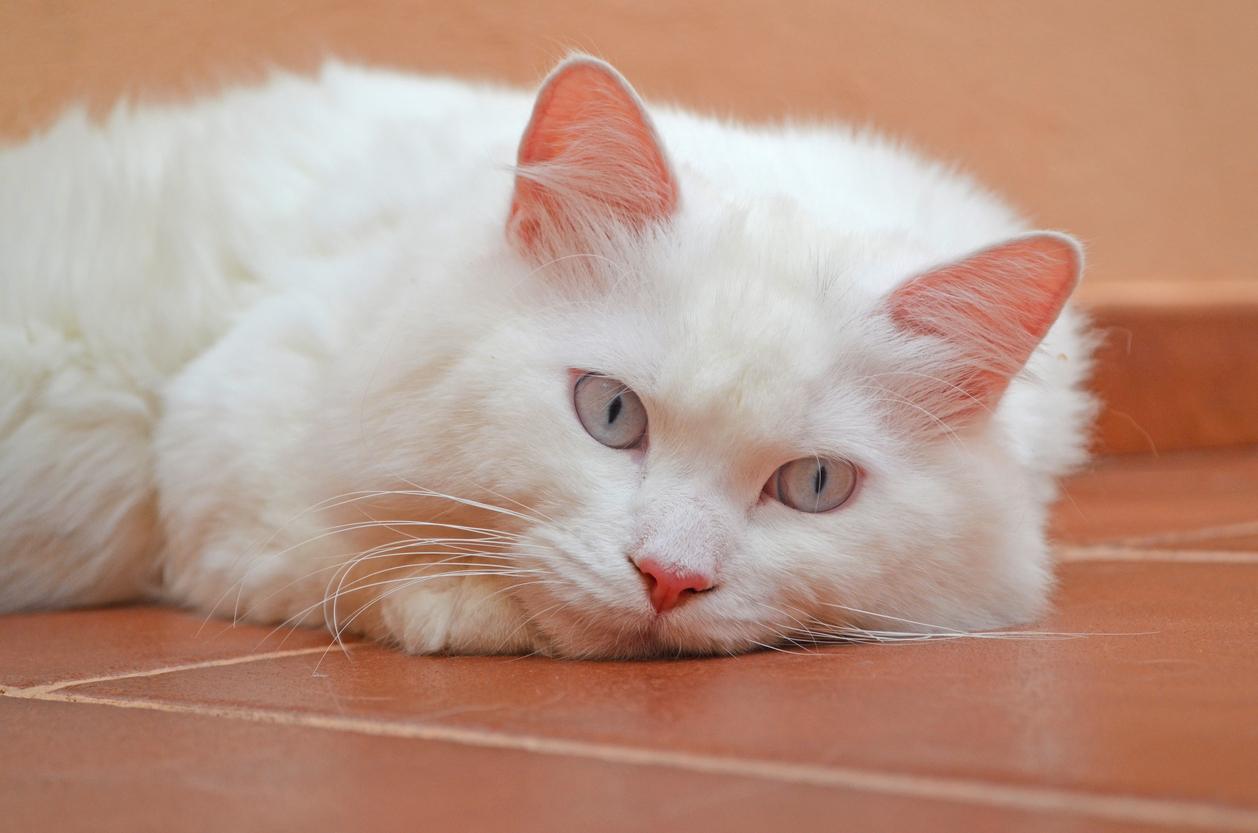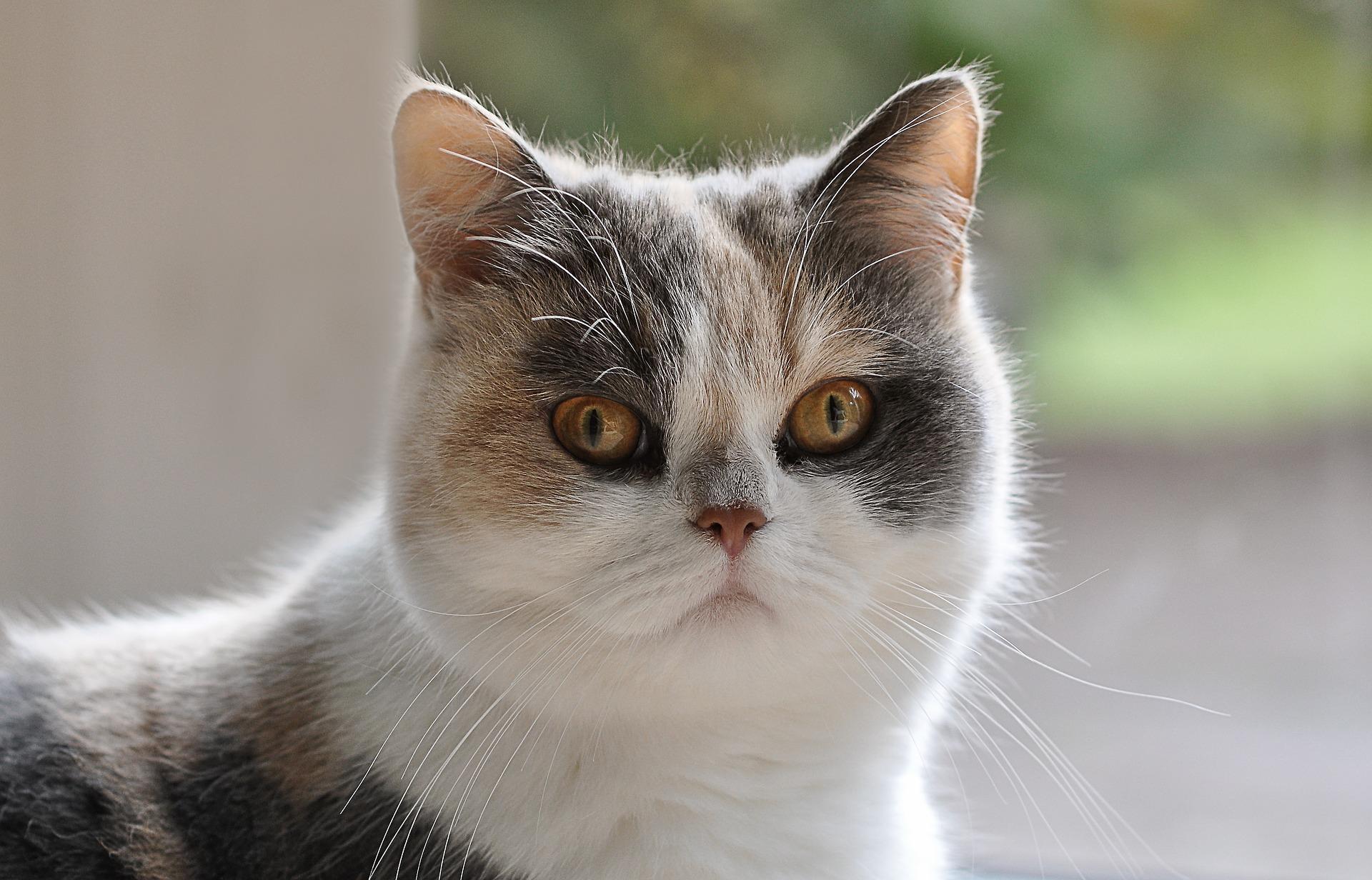Calm Cat Breeds - The Chillest Cats

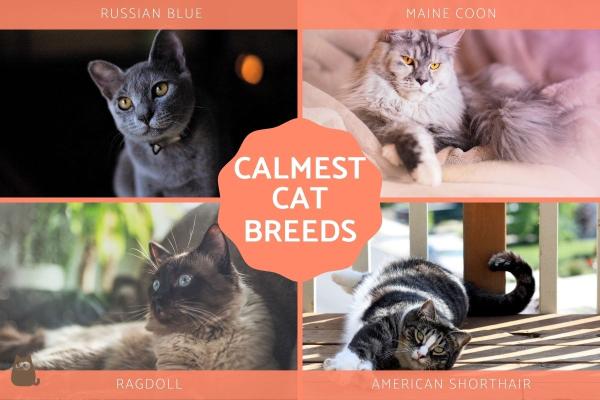

See files for Cats
The reasons why a cat are calm or hyperactive are not solely breed dependent. Their experiences when young, socialization, health status and many other factors combine to influence their behavior. However, since cat breeds exist due to careful selection of individuals to encourage certain traits, both physical and behavioral, we can see tendencies. Some cats tend to be very active and constantly seek attention. Others are relatively relaxed and, although they may be affectionate, they are happy to spend time on their own.
At AnimalWised, we highlight some of the chillest cats you might encounter with our list of 10 calm cat breeds. We explain a little about each breed and provide photos to see what they look like.
- American Shorthair
- British Shorthair
- Chantilly-Tiffany
- Burmese
- Maine Coon
- Ragdoll
- Persian
- Russian Blue
- Turkish Angora
- Scottish Fold
- Mixed-breed cats
1. American Shorthair
The American Shorthair is a very versatile medium-sized cat, capable of easily adapting to almost any environment, be it an apartment in the city or a house with a garden in the country. This cat stands out for their independent, patient and calm character. They tolerate children well and can be perfectly happy in a home with other cats. This can depend on the personality of the individual cats, but a proper introduction of the cats will help.
Although this cat will happily keep themselves entertained, they require proper environmental enrichment. This means ensuring they have toys, games, places to climb and other stimuli which help cognition and health. This is especially important if the cat does not have access to the outside or lives alone.
Despite it's short length, the American Shorthair's coat needs regular brushing to remove dead hair. They generally have good health, although they are prone to certain diseases such as leukemia or feline panleukopenia. Proper deworming and vaccination will help to prevent these health issues.
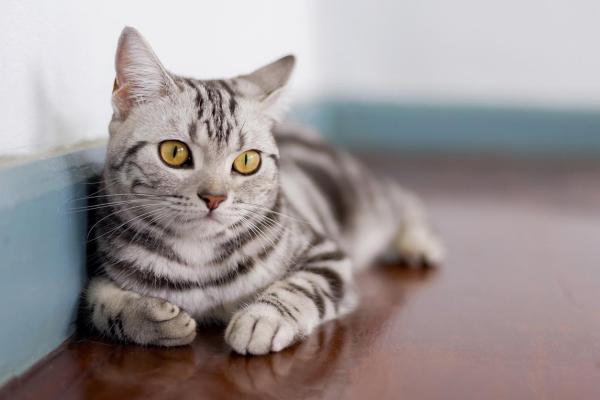
2. British Shorthair
One of the oldest cat breeds, the British Shorthair is popular the world over, not only in Britain. They have a very dense coat which is velvety-soft to the touch. Their rounded head gives them a very cuddly appearance. Some cat breeds look like tigers or other wild cats, but the British Shorthair looks like a cute cuddly toy and their behavior isn't far off. While they love to be affectionate, they are relatively independent and calm. Little phases them.
The British Shorthair can happily live with other cats and other pets, including dogs. They are very cozy and will often seek out warm places to snuggle. This includes in between our legs or curled up with us on the sofa. They exude calm, but are also fun and playful when they want to be. In terms of health, they are a robust cat. However, they can be prone to develop kidney and/or urinary problems later in life.
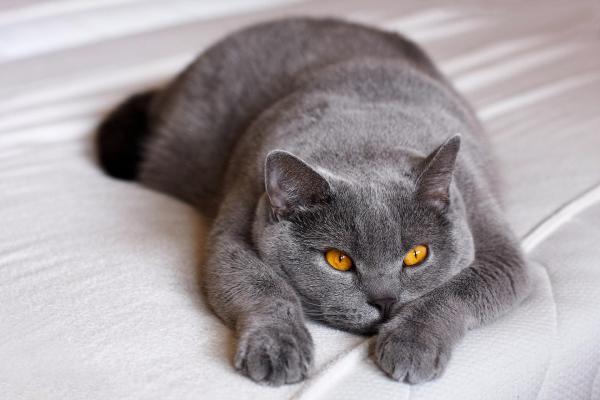
3. Chantilly-Tiffany
Also known as the Foreign Longhair or simply the Chantilly, the Chantilly-Tiffany is not a very common cat breed. For a long time they have not been recognized by the Fédération Internationale Féline (FIFé), but has been accepted by other breed standard organizations such as the American Cat Association (ACA). Physically, this breed stands out for their semi-long bushy coat which is usually cream, brown or silver in color. Their intense green eyes add to their charm.
The Chantilly-Tiffany is a very intelligent cat. They are always attentive to what is happening around them and they learn very easily. They are also affectionate and tend to demand the attention of their guardians with petitioning meows. Their activity levels not as high as that of other cats. Although they like to play, they value the tranquility of a home without too much fuss. Although the chantilly can get used to the presence of children or other animals, many specimens prefer to have small households.
Despite having quite long fur, this cat does not shed too much hair around the home. It is important to brush them at least once a week. We also need to pay special attention to the care and cleanliness of their eyes and ears. The hair that grows near them can become dirty or cause other problems. Your veterinarian can recommend the best products to maintain their hygiene.
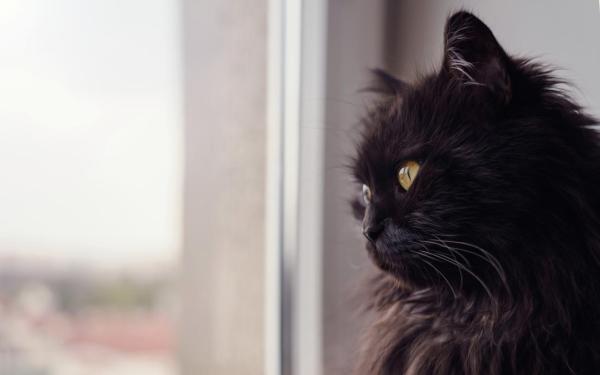
4. Burmese
The Burmese cat originates in Burma, the country known as present-day Myanmar. Despite these origins, they were mainly developed in France. Their semi-long fur has a coloration similar to that of certain Siamese type cat breeds, but they have the distinctive characteristic of much lighter fur on their paws. This gives them the appearance of wearing socks.
The Burmese cat is a sociable and affectionate feline that does not like to spend too much time alone. They are an ideal companion for families who spend most of the day at home or who already have other cats. As a result of their docile and calm temperament, the Burmese spends a lot of time resting, so it is important to take care of their diet and exercise. If you don't play with them or provide opportunity to exercise, they can be prone to obesity.
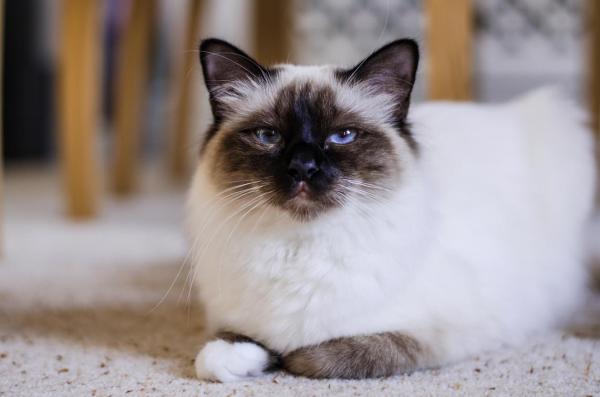
5. Maine Coon
Apart from being a chill cat breed, the Maine Coon initially stands out for their size and heft. Some can weigh over 30 lb, although it is getting into record breaking territory if they do. They are the state animal of Maine and the second part of their moniker comes from a legend which claimed they were born from the cross of a cat and a raccoon. This is partly due to their big busy tail.
Their distinctive features also make them look like lions on other wild cats thanks to a mane of hair surrounding their head. Similarly, they have tufted ears. Such abundant fur allows them to survive in low temperatures. They'll even enjoy running in snow if they can find it. At home, this calm breed is good-natured, patient and friendly. They love to play and explore, but do not tend to be overly destructive.
It is essential to provide the Maine Coon with quality food and control daily diet. They are a relatively gluttonous animal with a tendency to gain weight. Being so big and hairy, the extra kilos can go unnoticed and end up causing joint problems or even organ function problems, so an annual veterinary check-up is essential.
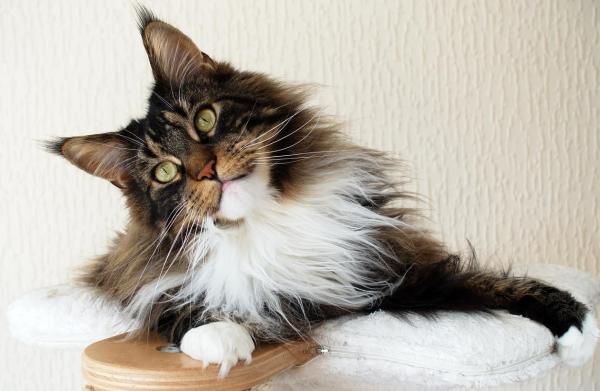
6. Ragdoll
The Ragdoll is another of the chillest cat breeds par excellence. They have unmistakable blue piercing eyes which add to their charm. The breed standard allows various coat colors and patterns, but cream or light-colored individuals tend to predominate.
The Ragdoll is considered a cat breed with a calm, gentle and docile temperament. They like to spend a lot of their day resting or playing with either their human or feline families. In fact, they are known to bond well with other animals if given the right socialization. They are not a particularly demanding cat, but they are intelligent, so you will need to stimulate their cognition regularly.
The ragdoll has a certain tendency to suffer from some hereditary pathologies, as well as kidney and urinary problems, especially in older cats. Despite this, it is a long-lived breed which should stay with us for a long time with the right care.
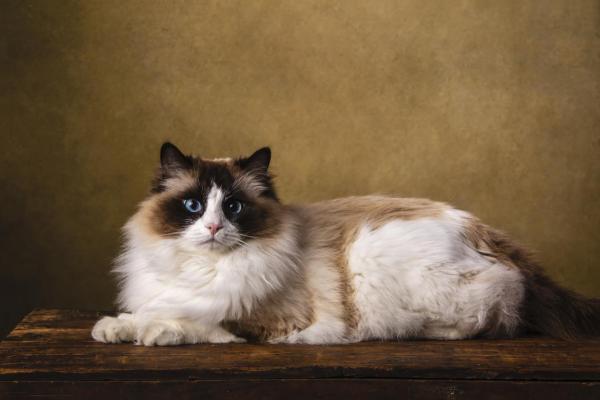
7. Persian
The Persian is an extremely popular feline breed all over the world. While there ate different types of Persian cat, the peke-type Persian with its flattened snout and somewhat-protruding eyes are the most recognizable. While their beautiful appearance is oft-remarked upon, it is their beautiful nature which makes them such a popular companion animal.
Persian cats value tranquility and will be uncomfortable in very noisy places. If they are somewhere with lots of commotion, they are most likely going to find somewhere to hide. They spend a lot of time sleeping and grooming themselves, not so much exploring or getting into trouble. This peaceful cat can be quite sensitive, so their ideal family is one which is as stable and calm as they are.
The Persian cat is often brachycephalic, the underlying cause of their flattened snout. It is a result of the shape of their skull, caused by select breeding over many generations. Unfortunately, brachycephaly often leads to health problems for the Persian cat, especially dental, respiratory and eye pathologies. For this reason, it is important to carry out periodic check-ups at the veterinarian, as well as care for their coat and other basic needs.
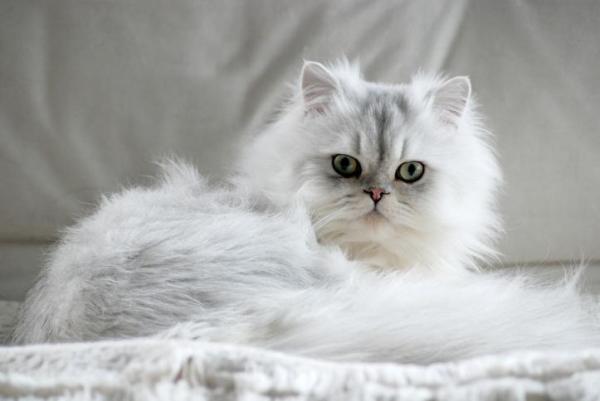
8. Russian Blue
The Russian Blue cat is slender, elegant and stands out for their silky short silver fur. They have large green eyes which are always attentive to what happens around them. As far as their temperament is concerned, the Russian Blue is a cautious and very reserved cat with strangers. However, as soon as they gain confidence with a person, they transform into an incredibly cuddly and loyal animal, capable of establishing a very strong bond.
Russian Blue cats are not overly dependent and will spend a lot of time of their own. They are very intelligent and responde well to training. They can even be taught tricks, although not to the extent of some dogs. They like to have fun, but do not like to be bothered when it is time to rest.
They are generally a healthy feline. Like all cats (especially purebred cats), they may be susceptible to suffering from certain genetic conditions, such as diabetes mellitus or cardiomyopathies. Annual veterinary checkups are recommended.
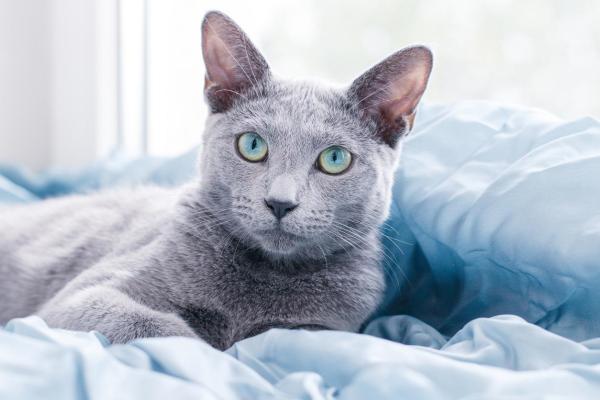
9. Turkish Angora
Although they can present in various colors, the immaculate white coat is the most common in Turkish Angora cats. Their huge eyes can be amber, gray, green or blue and it is very common to find specimens of this breed with heterochromia, i.e. two differently colored eyes.
The Turkish Angora is a particularly agile and light cat. They love to jump and climb to rest in high places from where they can observe their environment. They tend to chase anything that moves quickly in their vicinity. This makes them particularly good mousers. When they are with their family, they are calm and relaxed. They are particularly sweet and affectionate.
White, blue-eyed Turkish Angoras have a gene that makes them prone to developing hearing problems, such as total or partial deafness. This poses a danger to cats that have access to the outside of the home, but is less of a problem for those that live exclusively indoors. Their pale color also predisposes them to skin cancer, so caution should be taken in places with lots of direct sunlight.
For more background information on two of the calmest cat breeds, take a look at our comparison between the Turkish Angora and the Persian cat.
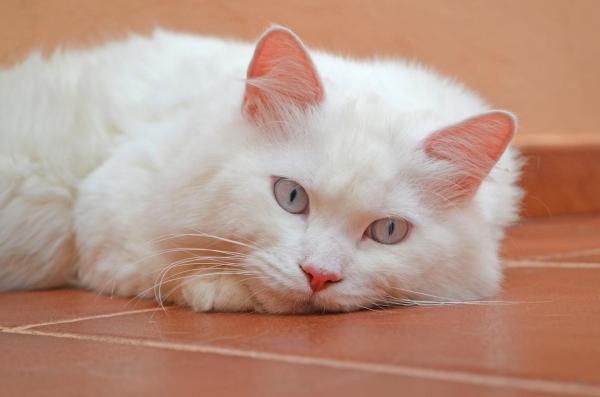
10.Scottish Fold
The Scottish Fold is a feline breed from Scotland. The fold in their name refers to their folded-over ears, a consequence of genetic inheritance. This feature, along with their rounded face and large eyes give them a distinctive innocent and almost-worried expression.
They are an outgoing and friendly, yet quiet cat breed. They are calm at home, although Scottish Fold kittens can be a little mischievous and playful. They form very strong bonds with their family and make wonderful house pets. Although they are relatively independent and will need some time on their own, they can bond strongly with their family, including children.
The main health problem of this cat is due to the presence of the ‘fold gene’. This genetic inheritance is associated with painful pathologies that affect cartilage and bone, such as arthritis and osteodystrophy. For this reason, breeders should never cross Scottish Folds with each other, but with other breeds such as the American Shorthair to prevent genetic problems. They are also prone to ear parasite infestations.
Find out some similar cats with our guide to floppy-eared cat breeds.
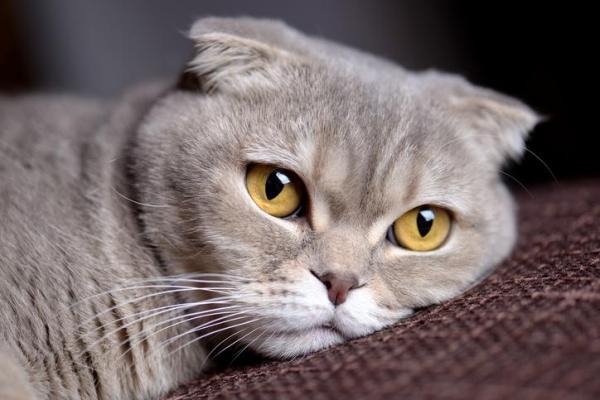
11. Mixed-breed cats
Although the felines we mention here are some of the calmest cat breeds, we need to point out that mixed-breed cats can be some of the chillest in the world. This includes crosses from the purebred cats we have mentioned, as well as domestic cats with no obvious genetic origin. Many tend to be calm, gentle and docile. Since they have not been subject to selective breeding, they are often some of the healthiest cats.
It is important to remember that animal shelters and places with cats for adoption need our help. Choosing a mixed-breed cat is a process which allows you to get to know the animal a little before you adopt. None of the calm cat breeds mentioned above are guaranteed to be docile cats. Meeting a cat at a shelter and recognizing thei calmness can be the best if you want to adopt a cat into a peaceful home.
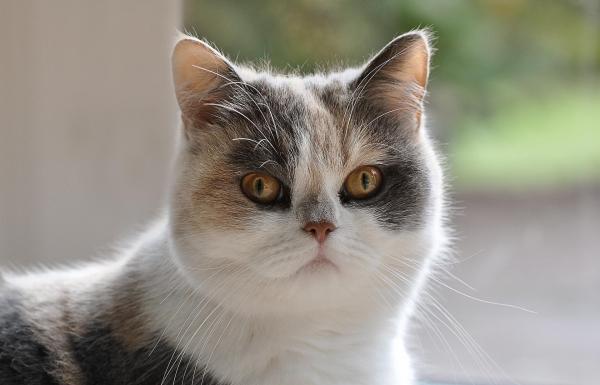
If you want to read similar articles to Calm Cat Breeds - The Chillest Cats, we recommend you visit our The most... category.
- American cat fanciers association. (n.d.). Acfacat.com. Retrieved February 12, 2022, from http://www.acfacat.com/breed_standard.htm
- Home. (n.d.). Eagles Wing Enterprises. Retrieved on February 12, 2022, from http://www.americancatassociation.com/
- It, BS-HF (n.d.). Breed standards. Fifeweb.Org. Retrieved February 12, 2022, from http://fifeweb.org/wp/breeds/breeds_prf_stn.php
- SuperUser. (2018). Browse All Breeds. Tica.org. https://tica.org/en/breeds/browse-all-breeds

